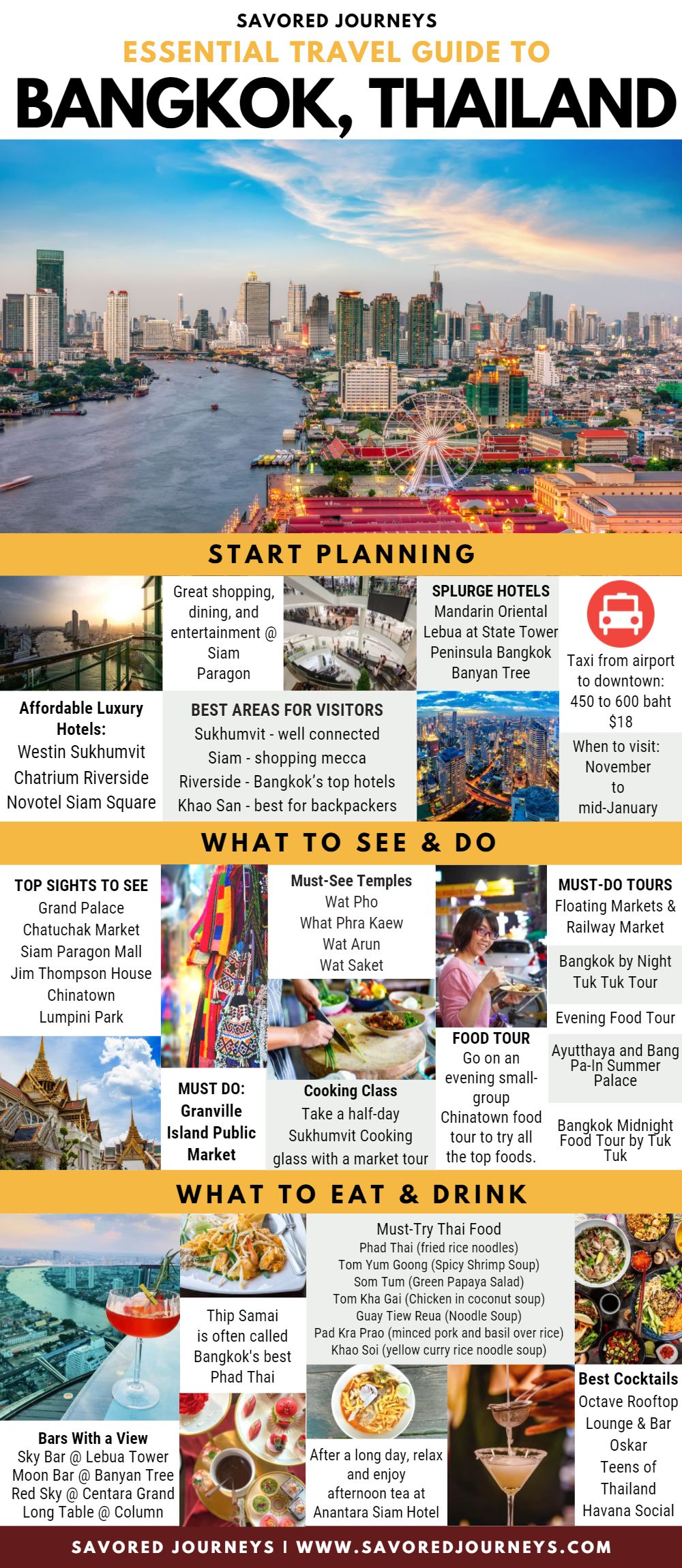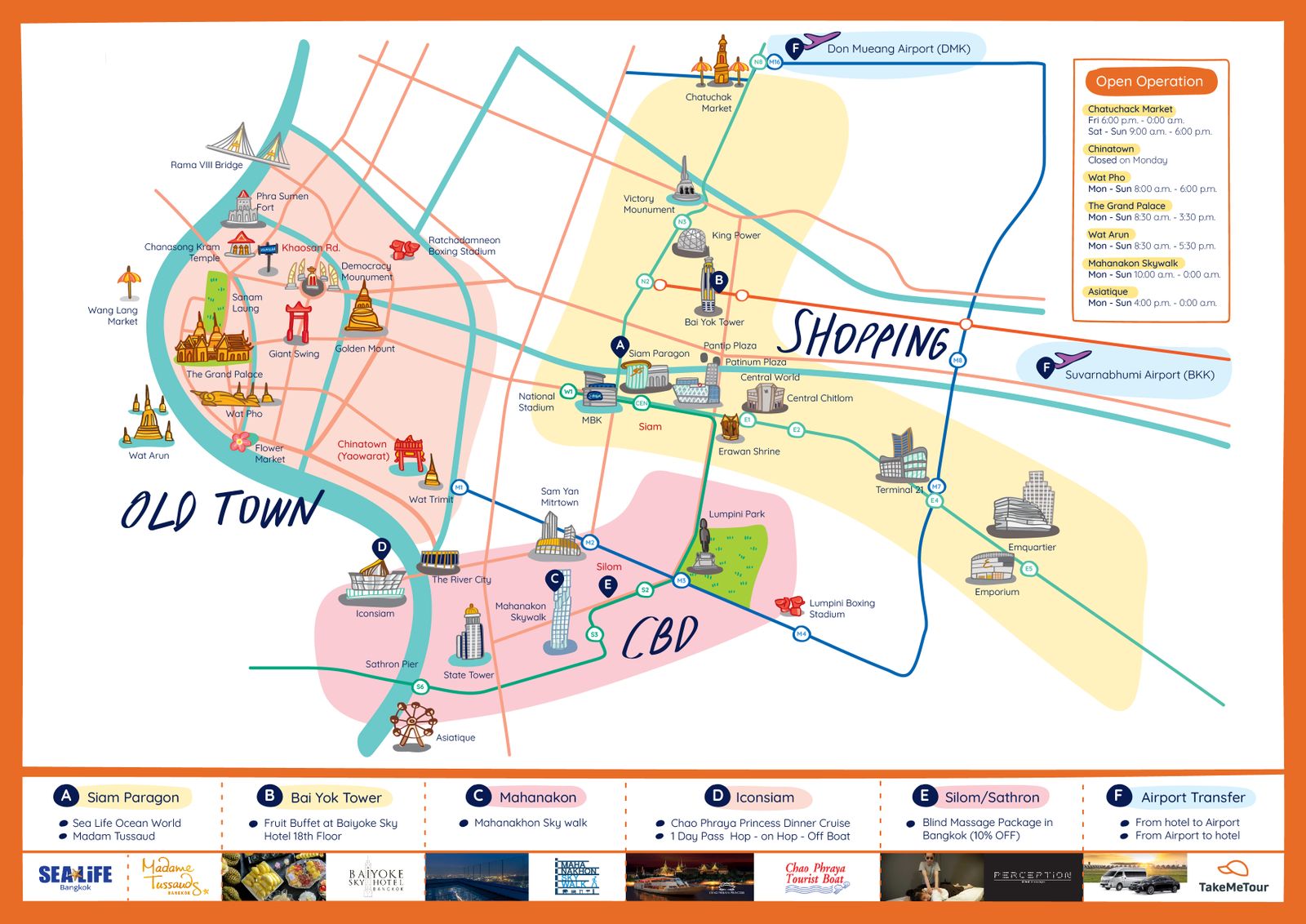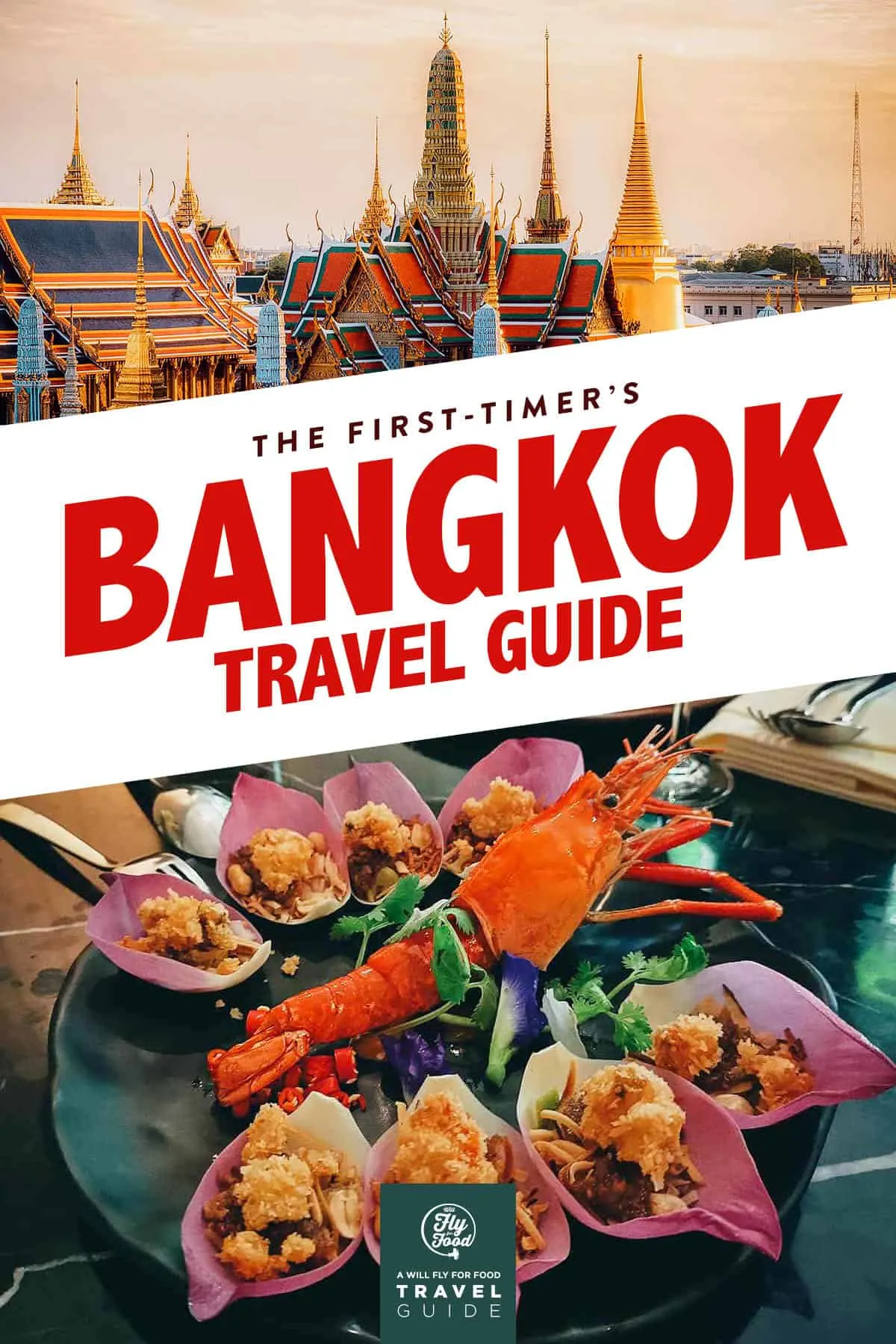
Bangkok, the pulsating heart of Thailand, is a city that defies easy categorization. A mesmerizing blend of ancient traditions and ultra-modernity, it’s a sensory overload in the best possible way. From the glittering spires of ancient temples to the gleaming skyscrapers, from the aromatic chaos of street food stalls to the serene calm of a Buddhist meditation, Bangkok offers an unparalleled travel experience. Often referred to as the "City of Angels," Krung Thep Maha Nakhon (its full ceremonial name) is a metropolis that never sleeps, inviting travelers to delve into its rich history, vibrant culture, and endless adventures. This comprehensive guide will navigate you through Bangkok’s top attractions, delve into its fascinating past, offer essential travel tips, and outline the best ways to explore this magnificent city.
A Glimpse into Bangkok’s Storied Past
Bangkok’s history is as captivating as its present. While a small trading post existed here for centuries, its true prominence began in 1782 when King Rama I, the first monarch of the Chakri Dynasty, moved the capital from Thonburi across the Chao Phraya River. This move followed the destruction of Ayutthaya, the former Siamese capital, by the Burmese. Rama I established the new capital, Krung Thep, on the eastern bank, building the Grand Palace and Wat Phra Kaew (Temple of the Emerald Buddha) to house the most sacred image in Thailand. This era, known as the Rattanakosin period, marked the beginning of modern Bangkok.

Related Articles about Bangkok: The Eternal City of Angels – A Comprehensive Travel Guide:
- Maldives: An Azure Dream – Your Ultimate Travel Guide to Paradise
- The Jewel of Arabia: An Ultimate Travel Guide to the United Arab Emirates
- Qatar: A Jewel of the Arabian Peninsula – Your Ultimate Travel Guide
- Bali: A Traveler’s Paradise – Your Ultimate Guide to the Island of Gods
- Peru: A Tapestry of Ancient Wonders, Vibrant Cultures, and Breathtaking Landscapes
For much of its early history, Bangkok was a city of canals (klongs), earning it the moniker "Venice of the East." These waterways served as the primary mode of transportation and commerce. Over time, as the city grew and modernized, many canals were filled in to make way for roads and infrastructure, transforming its landscape dramatically.
Throughout the 19th and 20th centuries, under the rule of successive Chakri kings, Bangkok embarked on a path of modernization. King Rama IV (Mongkut) and King Rama V (Chulalongkorn) were particularly instrumental in introducing Western technologies and administrative reforms, preventing Siam from being colonized by European powers. They built railways, hospitals, and introduced modern education, laying the groundwork for the vibrant metropolis we see today.
The 20th century saw significant political changes, including the end of absolute monarchy in 1932 and various periods of military rule, eventually leading to a constitutional monarchy. Despite these shifts, Bangkok continued to grow, attracting people from all over Thailand and the world, cementing its status as Southeast Asia’s economic, political, and cultural hub. Today, it stands as a testament to resilience, adaptation, and an unwavering spirit of progress while fiercely holding onto its cherished traditions.
Top Attractions: Where Tradition Meets Modernity
Bangkok’s attractions are diverse, offering everything from spiritual enlightenment to retail therapy and exhilarating nightlife.
-
The Grand Palace & Wat Phra Kaew (Temple of the Emerald Buddha): No visit to Bangkok is complete without exploring the Grand Palace, a sprawling complex of magnificent buildings that served as the official residence of the Kings of Thailand from the 18th century onwards. Within its walls lies Wat Phra Kaew, housing the revered Emerald Buddha, Thailand’s most sacred religious icon. The intricate details, vibrant colors, and sheer scale of the architecture are breathtaking. Remember to dress respectfully: shoulders and knees must be covered.
-
Wat Arun (Temple of Dawn): Located on the west bank of the Chao Phraya River, Wat Arun is an iconic landmark, particularly stunning at sunrise or sunset when its spires gleam with iridescent porcelain. Its central prang (Khmer-style tower) is adorned with colorful ceramics and intricate patterns, offering panoramic views of the river and city from its upper levels.
-
Wat Pho (Temple of the Reclining Buddha): Just a short walk from the Grand Palace, Wat Pho is famous for its massive, 46-meter-long Reclining Buddha, covered in gold leaf. It’s also considered the birthplace of traditional Thai massage, and you can even get a massage here or enroll in a short course. The temple complex is beautiful, with numerous stupas and Buddha images.
-
Chatuchak Weekend Market: A sprawling labyrinth of over 15,000 stalls, Chatuchak is one of the world’s largest markets. Open primarily on Saturdays and Sundays, it sells everything imaginable: clothing, handicrafts, antiques, food, plants, and even pets. It’s an unforgettable experience, demanding comfortable shoes and a good sense of direction.
-
Jim Thompson House: This exquisite traditional Thai house museum once belonged to Jim Thompson, an American entrepreneur credited with revitalizing the Thai silk industry. The collection of Southeast Asian art and the story of Thompson’s mysterious disappearance add to its allure. It offers a peaceful retreat from the city’s hustle.
-
Chao Phraya River & Klongs (Canals): The "River of Kings" is Bangkok’s lifeblood. Take a longtail boat tour through the old klongs of Thonburi to see a glimpse of traditional riverside life, or hop on the Chao Phraya Express Boat for an affordable and scenic way to navigate between major attractions. Dinner cruises offer a romantic evening experience.
-
Street Food Exploration: Bangkok is a street food paradise. From the Michelin-starred street stalls in Chinatown (Yaowarat) to humble vendors on every corner, the culinary scene is a vibrant explosion of flavors. Don’t miss Pad Thai, Tom Yum Goong, Green Curry, Mango Sticky Rice, and various grilled skewers. Embrace the local way – pull up a plastic chair and enjoy!
-
Rooftop Bars: Experience Bangkok’s glittering skyline from one of its many spectacular rooftop bars. Vertigo at Banyan Tree, Sky Bar at Lebua (of "The Hangover Part II" fame), and Octave Rooftop Lounge & Bar are just a few options offering breathtaking views and sophisticated cocktails.
-
Asiatique The Riverfront: A large open-air shopping and entertainment complex located on the riverfront. It combines a night market with boutique shops, restaurants, and entertainment venues, including a Ferris wheel, providing a relaxed evening atmosphere away from the downtown buzz.
-
Floating Markets: While some floating markets like Damnoen Saduak can be very touristy, others like Amphawa Floating Market (primarily open Friday-Sunday evenings) offer a more authentic local experience with delicious seafood and charming wooden houses. These usually require a half-day trip outside the city.

Accommodation Options: From Budget to Boutique
Bangkok offers a vast range of accommodation to suit every budget and style.
- Luxury (Riverside, Siam): For opulent stays with stunning river views and impeccable service, consider hotels along the Chao Phraya River (Mandarin Oriental, The Peninsula, Shangri-La). The Siam area, home to major shopping malls, also boasts five-star establishments like Siam Kempinski Hotel or The St. Regis.
- Mid-Range (Sukhumvit, Silom): Sukhumvit Road is a long, bustling stretch known for its vibrant nightlife, diverse restaurants, and excellent connectivity via the BTS Skytrain. Hotels here range from stylish boutiques to international chains (e.g., Novotel, Radisson Blu). Silom is another popular business and entertainment district with good hotel options and proximity to Lumpini Park.
- Budget/Backpacker (Khao San Road, Rambuttri): The infamous Khao San Road is the epicenter for backpackers, offering cheap guesthouses, lively bars, and street food. For a slightly more relaxed but still budget-friendly vibe, the nearby Rambuttri Road provides similar options with a bit more charm.
- Boutique Hotels: Bangkok is rich in unique boutique hotels that blend traditional Thai aesthetics with modern design, offering a more personalized experience. Look for these gems in various neighborhoods.
Transportation: Navigating the Urban Maze
Bangkok’s traffic is legendary, but the city has an excellent public transport network.
- BTS Skytrain & MRT Subway: These are your best friends for getting around quickly and avoiding traffic. The BTS (elevated train) covers major commercial and tourist areas, while the MRT (underground subway) complements it, reaching other key locations. Both are air-conditioned, efficient, and affordable. Purchase a Rabbit Card (BTS) or MRT Plus Card for convenience if staying longer.
- Taxis: Readily available and metered. Insist on the meter ("chai meter") to avoid inflated tourist prices. Taxis are comfortable but can get stuck in traffic. Ride-hailing apps like Grab are also very popular and often more convenient, providing upfront pricing.
- Tuk-Tuks: The iconic three-wheeled open-air vehicles offer an exhilarating, if sometimes dusty, experience. Always negotiate the fare before getting in. They’re great for short distances or experiencing the local charm, but can be more expensive than taxis for longer rides.
- Motorbike Taxis: For zipping through traffic or short distances, motorbike taxis are a fast (and sometimes thrilling) option. Wear a helmet and negotiate the fare beforehand.
- Chao Phraya Express Boat: A fantastic way to explore riverside attractions, avoid traffic, and enjoy scenic views. Various lines serve different stops along the river.
- Airport Rail Link: Connects Suvarnabhumi Airport (BKK) directly to the city center (Phaya Thai station) for quick and easy transfers. Don Mueang Airport (DMK) uses buses, taxis, or Grab.
Best Time to Visit: Weathering the Seasons
Bangkok experiences a tropical monsoon climate with three main seasons:
- Cool and Dry Season (November to February): This is widely considered the best time to visit. Temperatures are pleasant (20-30°C / 68-86°F), humidity is lower, and rainfall is minimal. Ideal for sightseeing and outdoor activities, but also the peak tourist season, meaning higher prices and larger crowds.
- Hot Season (March to May): Temperatures soar, often exceeding 35°C (95°F), with high humidity. It can be quite uncomfortable for extensive outdoor exploration. However, it’s a good time for budget travelers, and Songkran (Thai New Year) in April is a massive water festival if you don’t mind getting soaked.
- Rainy Season (June to October): Characterized by frequent, heavy downpours, often in the late afternoon or evening, which typically last an hour or two. Temperatures are still warm and humid. While it can disrupt plans, the rain often clears quickly, leaving the city refreshed. Lush greenery and fewer crowds are benefits.
Essential Travel Tips for a Smooth Journey
- Visa Requirements: Check your country’s visa requirements for Thailand well in advance. Many nationalities receive a visa-exempt entry for 30 or 45 days upon arrival.
- Currency: The local currency is the Thai Baht (THB). ATMs are widely available, and credit cards are accepted in most hotels, malls, and larger restaurants. Carry small denominations for street vendors and local transport.
- Language: While English is spoken in tourist areas, learning a few basic Thai phrases (e.g., "Sawasdee krap/ka" for hello, "Khop Khun krap/ka" for thank you) will go a long way and be appreciated.
- Dress Code: When visiting temples or royal palaces, always dress modestly. Shoulders and knees must be covered. It’s advisable to carry a sarong or scarf for impromptu visits.
- Scams: Be aware of common tourist scams, such as the "Grand Palace is closed today" or "gem scam" from overly friendly tuk-tuk drivers or strangers. Always verify information directly at the attraction.
- Safety: Bangkok is generally safe, but exercise common sense. Watch your belongings, especially in crowded markets.
- Connectivity: Purchase a local SIM card upon arrival at the airport or from convenience stores. They are affordable and offer excellent data packages.
- Etiquette: Thai culture is deeply rooted in respect. The head is considered sacred, and feet are the lowest. Avoid pointing your feet at people or Buddha images. The "wai" (a prayer-like gesture) is the traditional greeting.
- Hydration: Drink plenty of bottled water, especially during the hot season. Tap water is not safe to drink.
- Bargaining: At markets (especially Chatuchak), bargaining is expected and part of the experience, but always do so politely and with a smile.
Conclusion: Embrace the Chaos, Discover the Charm
Bangkok is a city that engages all your senses – the aroma of spices wafting from street stalls, the vibrant colors of silk and temple murals, the rhythmic drone of traffic juxtaposed with the serene chants from a nearby temple, the taste of exquisite curries, and the texture of ancient stone underfoot. It’s a city of contrasts, where tradition and modernity dance a captivating tango.
While its initial intensity can be overwhelming, allow yourself to surrender to its rhythm. Explore its hidden alleys, get lost in its markets, marvel at its golden temples, savor its incredible food, and connect with its warm-hearted people. Bangkok isn’t just a destination; it’s an experience, a vibrant journey that promises to leave an indelible mark on your soul. Pack your bags, open your mind, and prepare to be enchanted by the eternal City of Angels.





